What Does a Peacock Symbolize Spiritually? Immortality!
The peacock is a symbol of spirituality that encompasses various meanings including immortality, rejuvenation, beauty, transformation, healing, and protection.
It is a revered spiritual emblem in many cultures, often seen as a conduit for profound spiritual messages, especially when encountered in dreams.
Spiritually, the peacock embodies a range of potent symbols:
For example, in Hindu culture, the peacock is associated with the deity Saraswati, representing wisdom and the arts.
Embracing the essence of the peacock can inspire individuals to seek their own spiritual awakening, encouraging a journey toward inner beauty and personal growth.
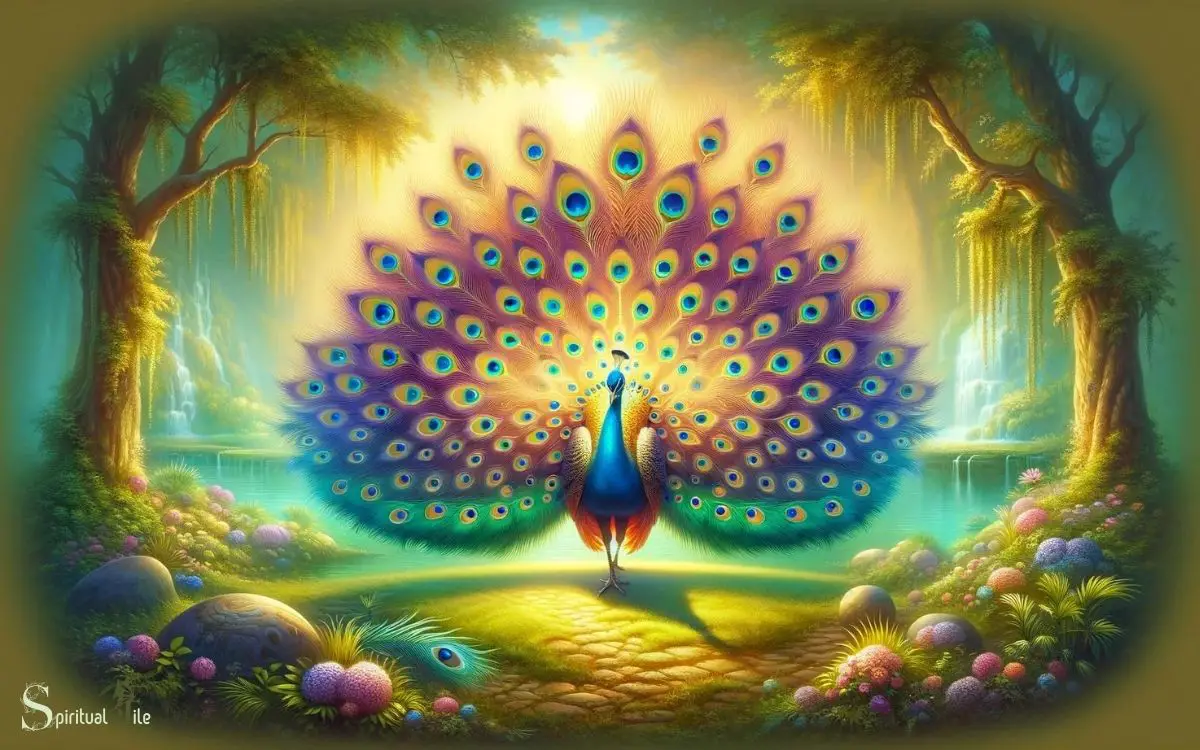
Key Takeaway
Historical and Cultural Significance
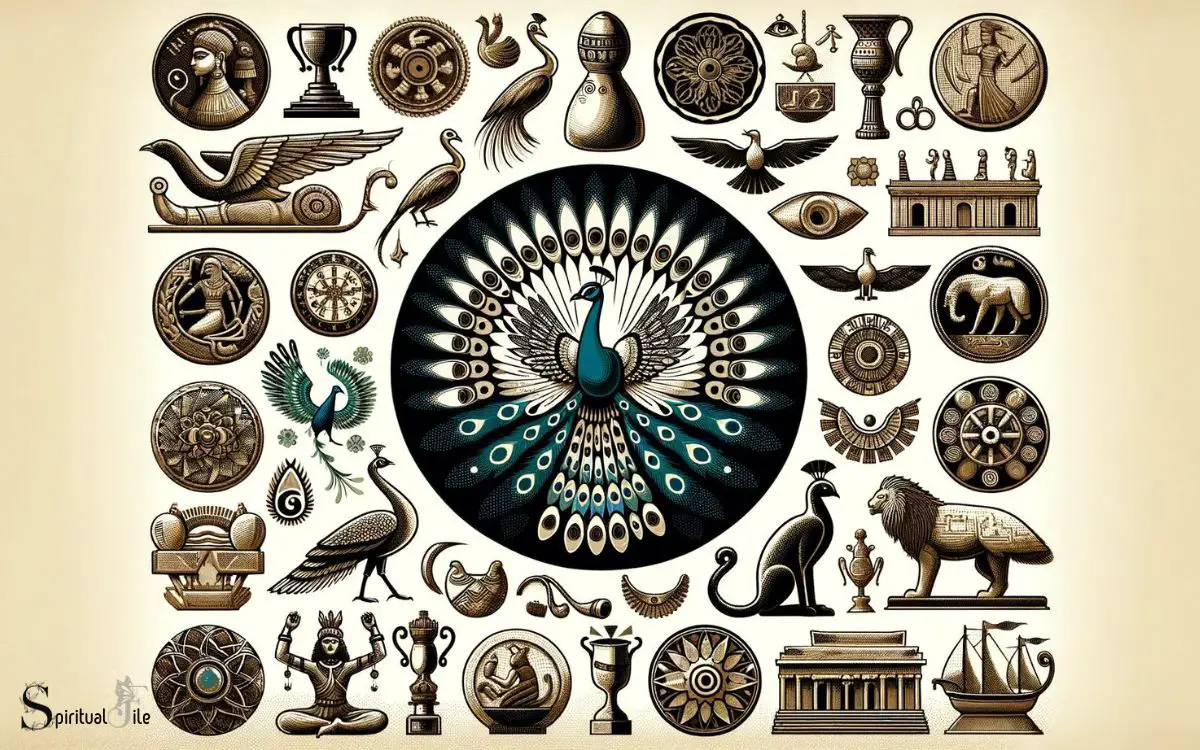
The historical and cultural significance of the peacock is evident in various religious and mythological traditions around the world.
- In Hinduism, the peacock is associated with the goddess Saraswati, symbolizing the qualities of patience, benevolence, and good luck.
- In Greek mythology, the peacock is linked to the goddess Hera, representing immortality and the all-seeing eyes of the stars.
- In Christianity, the peacock’s renewal of feathers symbolizes resurrection and immortality.
The peacock’s iridescent feathers have also been celebrated in Chinese and Japanese cultures, representing beauty, royalty, and good fortune.
Across these diverse traditions, the peacock has consistently been revered as a symbol of beauty, spirituality, and protection, making it a prominent figure in global cultural and historical narratives.
Peacock Symbolism in Different Religions
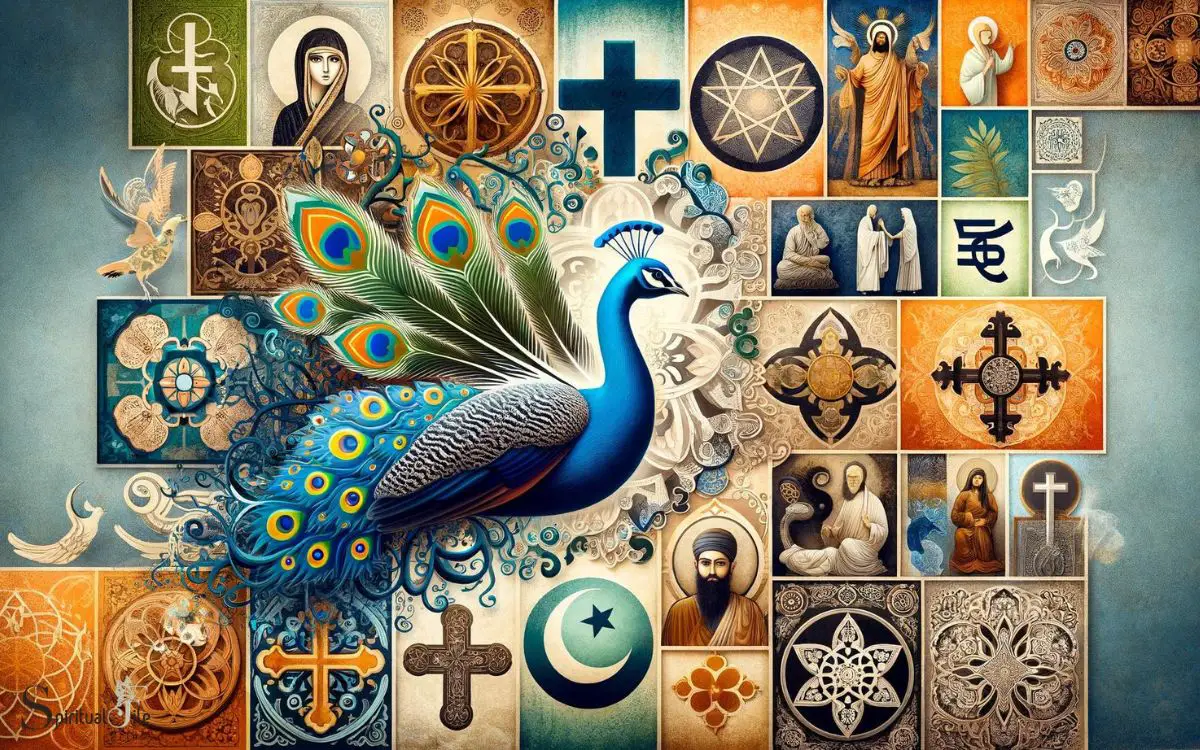
Peacock symbolism holds significant meaning in various religions, including Christianity, Hinduism, and Islam. Each religion attributes unique symbolism to the peacock, reflecting its diverse spiritual significance.
In Christianity, the peacock is often associated with resurrection and eternal life.
Its feathers, which are said to retain their vibrant colors even after death, symbolize the belief in the afterlife and the promise of salvation. The peacock’s regal and majestic appearance also represents the glory of God’s creation.
In Hinduism, the peacock is closely associated with the deity Lord Krishna and is considered a sacred bird.
It is believed that the peacock’s beautiful plumage represents divine beauty and grace. The peacock is also seen as a symbol of fertility and prosperity, as its feathers symbolize abundance and good fortune.
In Islam, the peacock is seen as a symbol of beauty, dignity, and spiritual awakening. It is believed that the peacock’s elegant display of feathers represents the spiritual enlightenment that comes from seeking knowledge and understanding.
The peacock is also associated with the concept of paradise, as its beauty is said to be reminiscent of the heavenly gardens described in Islamic scripture.
Exploring these different perspectives offers a deeper understanding of the peacock’s spiritual symbolism across various religious traditions.
Christianity and Peacock Symbolism
In Christianity, the peacock symbolizes resurrection and immortality, reflecting its portrayal as a symbol of eternal life and the resurrection of Jesus Christ.
Early Christian art and literature often depicted the peacock as a symbol of immortality, as its flesh was believed to be resistant to decay. This symbolism is derived from the peacock’s ability to replace its feathers annually, representing renewal and rebirth.
In Christian iconography, the peacock is also associated with the ‘all-seeing’ church, as its plumage was thought to symbolize the all-seeing God.
The peacock’s tail feathers were seen as a symbol of the ‘all-seeing’ church, with the eyes on the feathers representing the all-seeing God. This symbolic representation aligns with the Christian belief in God’s omniscience.
Transitioning into the subsequent section about ‘peacock symbolism in Hinduism’, the peacock is also deeply revered in Hindu culture and holds significant symbolism within the religion.
Peacock Symbolism in Hinduism
Hinduism assigns a significant spiritual symbolism to the peacock, as it is revered as a sacred bird in the religion and holds distinct representations in various religious contexts. In Hinduism, the peacock is associated with several deities and has diverse symbolic meanings.
Here is a table illustrating the symbolism of peacocks in Hinduism:
| Deity | Symbolism | Context |
|---|---|---|
| Lord Kartikeya | Vehicle and associated with war and protection | Represents the overcoming of obstacles |
| Goddess Saraswati | Symbol of beauty and knowledge | Signifies wisdom, creativity, and learning |
| Lord Krishna | Peacock feather adorning his crown | Represents divine beauty and grace |
The peacock’s symbolism in Hinduism showcases its multifaceted significance within the religion, embodying qualities of protection, wisdom, and divine beauty.
Peacock Symbolism in Islam
The spiritual symbolism of the peacock extends beyond Hinduism, with its representation in Islam and other religions offering distinct perspectives on its significance.
In Islam, the peacock is seen as a symbol of beauty, immortality, and incorruptibility. According to Islamic tradition, the meat of the peacock does not decay, even after death, which has led to the belief that the peacock symbolizes immortality.
Additionally, the ‘Peacock Throne,’ a famous jeweled throne of Persian origin, is an important symbol in Islamic history, representing royalty, power, and dominion.
The peacock’s dazzling plumage is also associated with the idea of heavenly beauty and paradise in Islamic traditions, representing the divine creation and the splendor of the natural world.
This spiritual symbolism in Islam provides a unique perspective on the peacock’s significance as a symbol of immortality.
The Peacock as a Symbol of Immortality

Peacock symbolizes immortality in various spiritual and cultural traditions.
- In Hinduism, the peacock is associated with the goddess Saraswati, who is revered as the keeper of ultimate knowledge and wisdom. In this context, the peacock’s ability to eat poisonous snakes without being harmed represents the triumph of good over evil and the immortality of the soul.
- Similarly, in Chinese mythology, the peacock’s association with the phoenix, a symbol of immortality and resurrection, further reinforces its connection to eternal life.
- In Christianity, the peacock’s molt and regeneration of its feathers have been seen as a symbol of Christ’s resurrection and the hope of immortality.
Across these traditions, the peacock serves as a powerful symbol of immortality, transcending cultural and spiritual boundaries.
Spiritual Meanings of Peacock Feathers
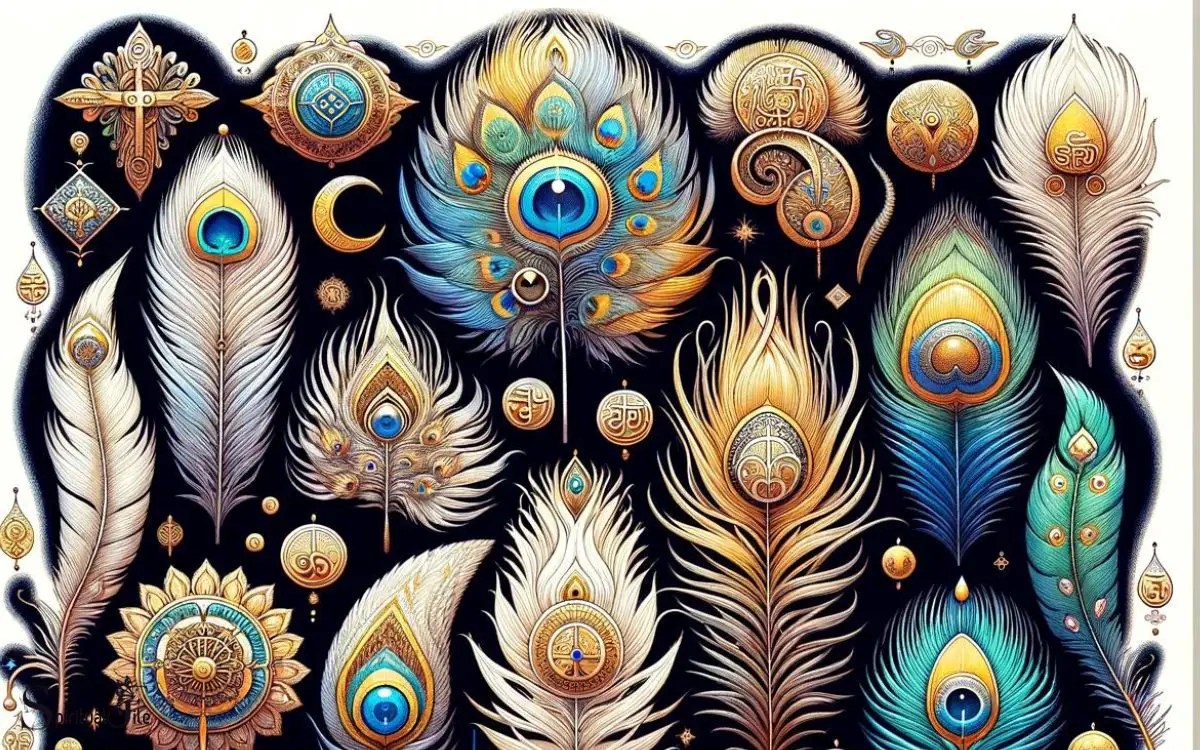
Peacock feathers hold significant spiritual symbolism across various cultures and belief systems. Their vibrant colors and intricate patterns are often associated with qualities such as integrity, beauty, and protection.
Additionally, peacock feathers are used in various rituals and ceremonies to harness their spiritual energy and invoke positive energies.
Symbolism of Peacock Feathers
Adorning themselves with iridescent hues, peacock feathers hold deep spiritual significance across various cultures and belief systems. The symbolism of peacock feathers varies, representing different spiritual meanings.
Below is a table outlining the spiritual symbolism of peacock feathers across different cultures:
| Culture/Religion | Spiritual Symbolism of Peacock Feathers |
|---|---|
| Hinduism | Protection and guidance |
| Christianity | Resurrection and immortality |
| Buddhism | Wisdom and compassion |
These interpretations highlight the spiritual depth and universal appeal of peacock feathers, reflecting their significance in diverse spiritual traditions.
The symbolism of peacock feathers transcends boundaries, offering unique insights and inspiration to individuals seeking spiritual connection and understanding.
Moving forward, let’s delve into the spiritual significance of peacocks in various cultures.
Spiritual Significance in Cultures
In various cultures across the world, peacock feathers hold distinct spiritual meanings, reflecting the beliefs and values of different religious and spiritual traditions.
- In Hinduism, the peacock is associated with the goddess Saraswati, symbolizing wisdom, knowledge, and learning.
- In Christianity, the peacock symbolizes immortality and the resurrection, as its shedding and regrowth of feathers represent renewal and rebirth.
- In Buddhism, the peacock is seen as a symbol of purity and is associated with spiritual awakening.
- In Islam, the peacock is revered for its beauty and is considered a symbol of compassion and watchfulness.
Native American cultures view the peacock as a symbol of integrity and the beauty of the earth.
These diverse interpretations demonstrate the universal significance of the peacock and its feathers in spiritual and cultural contexts.
Peacock Feather Rituals
The significance of peacock feathers in spiritual rituals is deeply rooted in the traditions of various cultures worldwide.
Peacock feathers hold significant spiritual meanings, evoking emotions such as:
- Protection: In many cultures, peacock feathers are believed to protect against negative energies and are often used in spiritual cleansing rituals.
- Spiritual Connection: The vibrant colors and distinct eye pattern of peacock feathers symbolize the all-seeing and all-knowing nature of spirituality, fostering a deeper connection with the divine.
- Renewal and Immortality: Peacock feathers are associated with renewal and immortality, representing the cycle of life, death, and rebirth in spiritual practices.
These symbolic meanings make peacock feathers an integral part of various rituals and ceremonies, reflecting the profound spiritual significance they hold.
This connection between peacock feathers and spirituality is further exemplified in the peacock’s symbolism across different belief systems.
The Peacock’s Connection to Spirituality
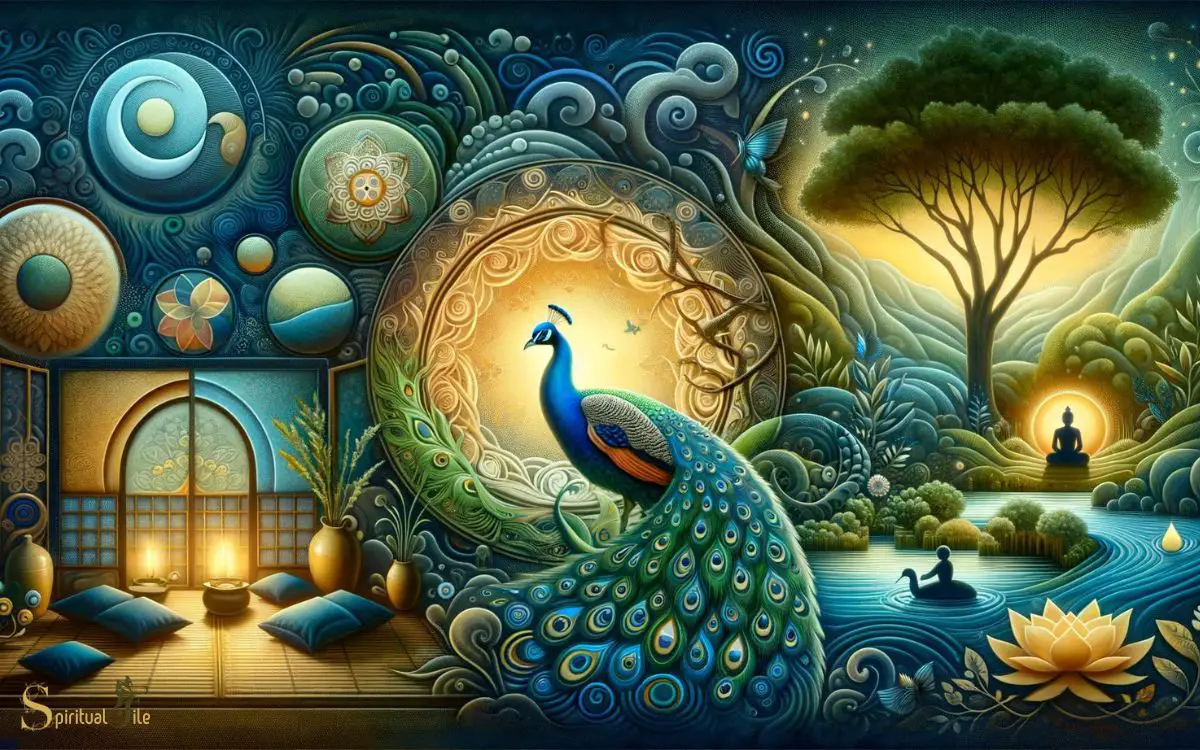
Peacocks are often associated with spirituality due to their striking display of vibrant and intricate plumage. In many cultures, the peacock is seen as a symbol of integrity, nobility, and the beauty of the soul.
Its resplendent feathers are believed to represent the all-seeing eyes of the divine, signifying wisdom and the watchful nature of spiritual awakening.
The peacock’s ability to shed and regrow its feathers has also been interpreted as a metaphor for renewal, rebirth, and immortality.
This symbolism has led to the peacock being revered as a spiritual guide, inspiring individuals to embrace their inner beauty and express their true selves.
Understanding the peacock’s spiritual significance can provide insight into its role as a symbol of enlightenment and higher consciousness.
This deep spiritual connection to the peacock also extends to dream interpretation, where the bird’s symbolism takes on unique significance.
Peacock Symbolism in Dream Interpretation
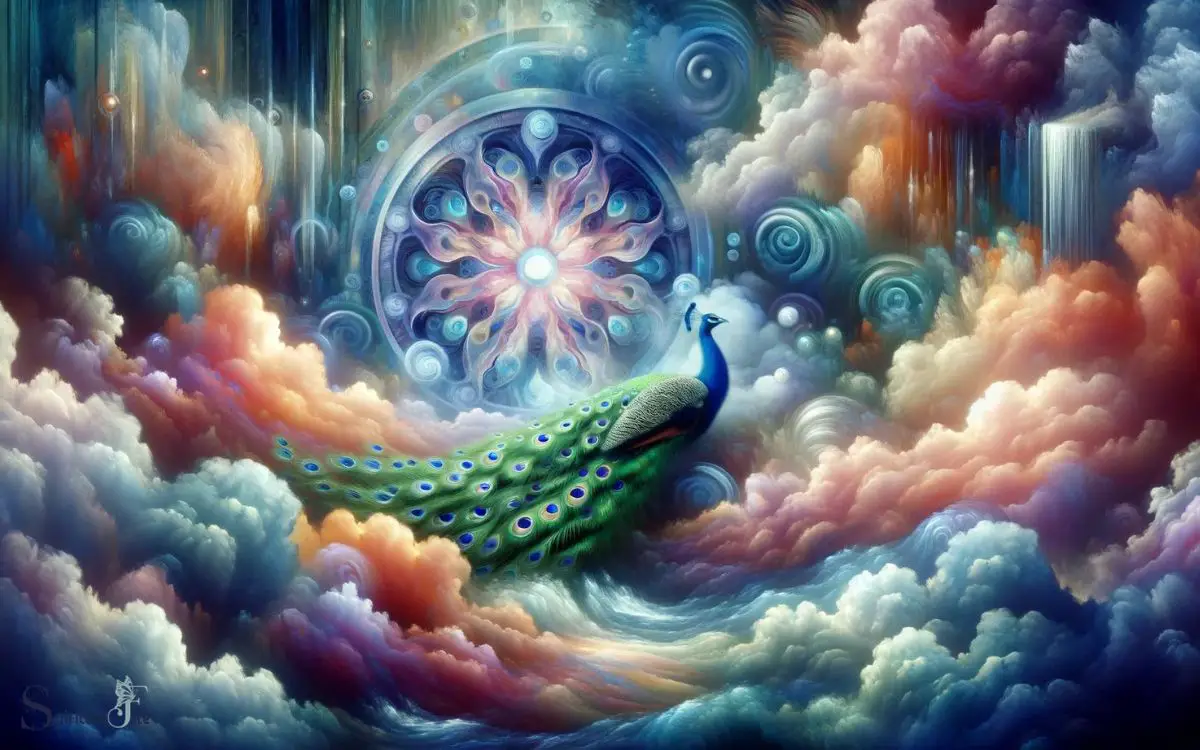
Peacocks in dreams are often associated with symbolism that reflects the beauty, confidence, and pride that the bird represents in waking life.
When interpreting a dream featuring a peacock, consider the following:
- Beauty and Vibrancy: Seeing a peacock in a dream may signify a call to embrace one’s own inner beauty and uniqueness. It can serve as a reminder to appreciate the vibrant aspects of life and to express oneself authentically.
- Confidence and Pride: The peacock’s proud display of its feathers can symbolize confidence and self-assuredness. In a dream, it may indicate a need to assert oneself or to take pride in one’s accomplishments.
- Spiritual Awakening: Some interpretations suggest that encountering a peacock in a dream may signify a spiritual awakening or the unfolding of higher consciousness.
What is the Spiritual Significance of Immortality in Different Bird Symbols, such as Peacocks and Phoenixes?
The phoenix symbolism for immortality is especially prominent in different bird symbols such as peacocks and phoenixes. In many cultures, the peacock represents resurrection and immortality, while the phoenix is known as a symbol of renewal and rebirth. Both birds carry a deep spiritual significance related to immortality and eternal life.
Healing and Transformation Represented by the Peacock
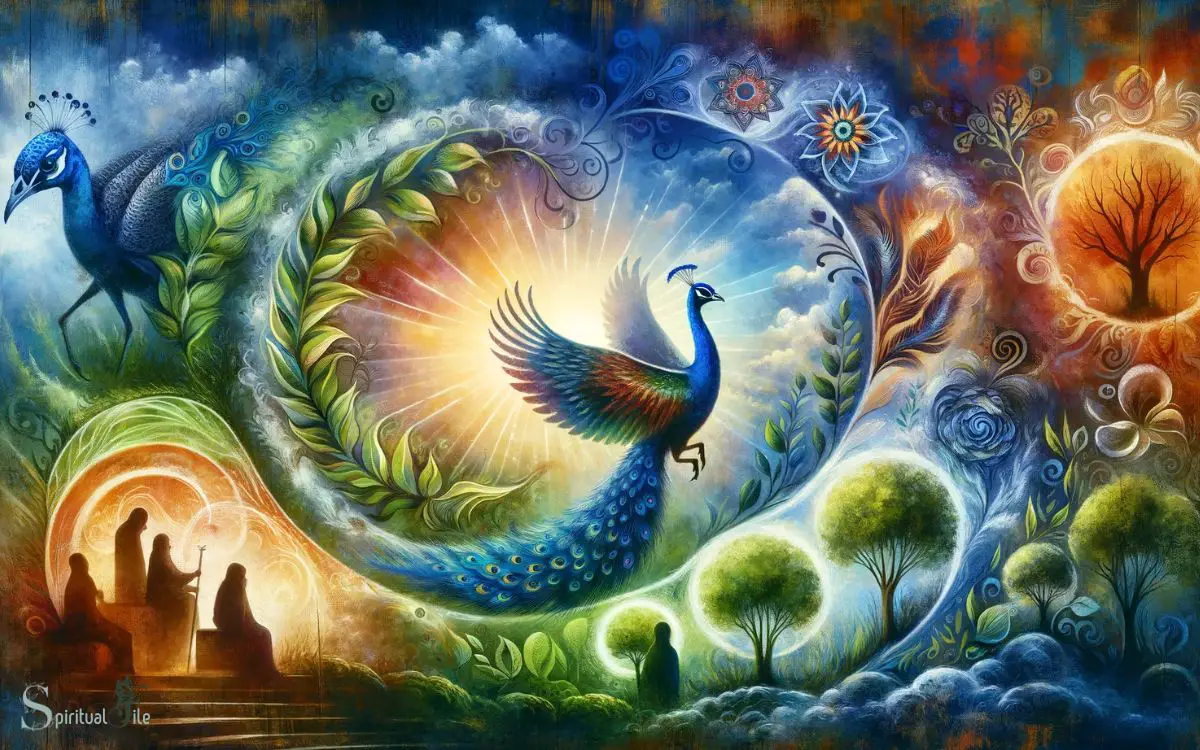
Representing healing and transformation, the peacock embodies spiritual renewal and growth. In various spiritual traditions, the peacock’s radiant and captivating display of feathers symbolizes the transformative power of healing.
The peacock teaches individuals to embrace their true colors and to express themselves authentically.
Through its symbolism, the peacock encourages individuals to embark on a journey of inner healing and self-discovery. It serves as a reminder that true transformation comes from within and that embracing one’s unique beauty and strengths can lead to spiritual growth.
The peacock’s symbolism of healing and transformation inspires individuals to release old patterns, let go of past burdens, and emerge renewed and revitalized.
By embracing the peacock’s spiritual symbolism, individuals can find the courage and strength to undergo profound personal growth and healing.
Conclusion
The peacock’s spiritual symbolism spans across various cultures and religions, representing immortality, healing, and transformation.
Its vibrant feathers and connection to spirituality make it a powerful symbol in dream interpretation and spiritual practices.
The peacock’s significance in history and its portrayal in religious beliefs highlight its enduring impact on the human psyche, evoking emotions of awe and admiration.






